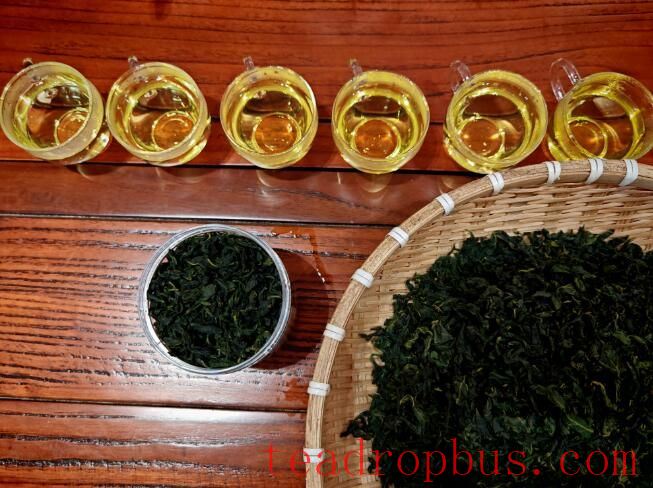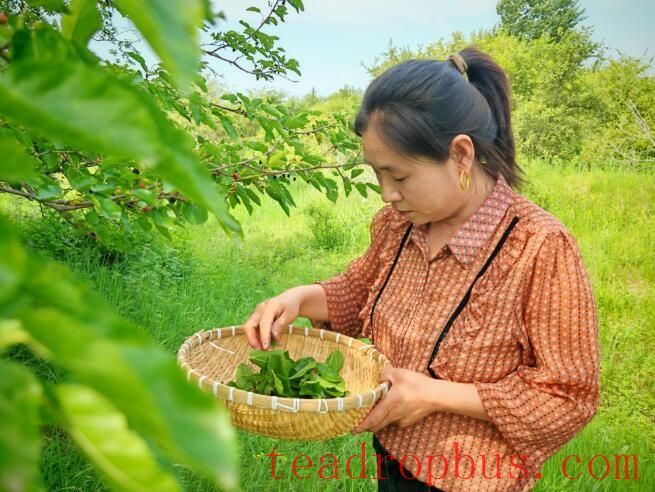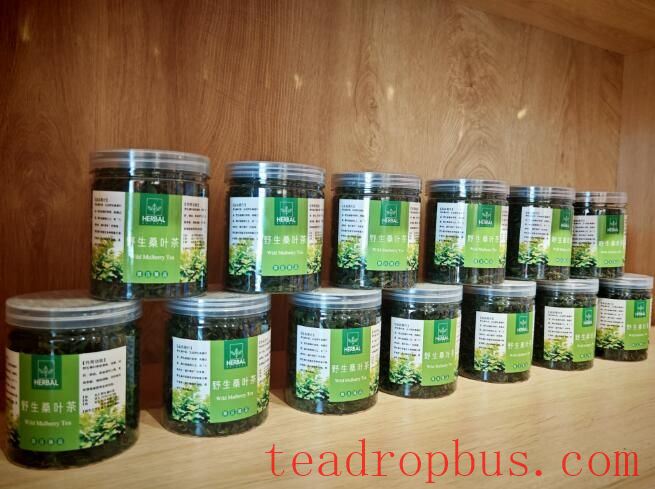In the summer season, in the forest near the Village of Qianguaxigacha, Bayantaola Town, Kezuo Left Mid Banner, Tongliao City, Inner Mongolia, densely planted and upright mulberry trees are lush and full of vitality, with broad and thick mulberry leaves that are a fresh green. In the past, these mulberry trees could only yield mulberries to be eaten as wild fruit. Now, thanks to Zhao Chunhua's “magic touch,” mulberry leaf Tea has become a beverage for people.
Zhao Chunhua is a villager from Qianguaxigacha, Bayantaola Town. The village is close to the Ustun Nature Reserve, and the surrounding areas are abundant with mulberry trees, winged seed trees, wingnuts, sea buckthorns, and other species. As a native, Zhao Chunhua is very familiar with these tree types. The idea of making mulberry leaf tea came to her during an inspection at a New Year's goods festival, where she learned that mulberry leaves could be made into tea and sold for good money. Zhao Chunhua wanted to bring this industry back to her hometown, not only to increase household income but also to lead fellow villagers to shared prosperity.

Freshly processed mulberry leaf tea (Photographed by Bao Tingting)
“I started making mulberry leaf tea in 2025, and I've been doing it for five years now. I'm gaining more experience in tea-making as time goes on. During the slack farming seasons, I work with the women in the village to pick tea, mulberry leaves, and mulberries. Now, I can make about 70,000 to 80,000 RMB per year from mulberry leaf tea,” said Zhao Chunhua, a villager from Qianguaxigacha, Bayantaola Town.
The saying goes that ginseng is a hot tonic while mulberry leaves offer a gentle one. Mulberry leaves, known as the “king of plants,” are rich in amino acids required by the human body and are recognized by the Chinese national health department as a “food and medicine homologous” plant. At the beginning of making mulberry leaf tea, Zhao Chunhua encountered many difficulties. With no experience, she worked hard to study and experimented repeatedly since she didn't know how to process tea. “Every year, we start processing Spring Tea in mid-May and finish picking tea after the frost in October. The taste of mulberry leaf tea varies by season, from spring to autumn. There are strict requirements for checking the tea: the leaves must be whole and tender. After cleaning, they are air-dried and then stir-fried over low to medium heat for four to five hours,” Zhao Chunhua explained while stir-frying the tea.

Zhao Chunhua picking mulberry leaves (Photographed by Bao Tingting)
After picking the mulberry leaves, the critical step in tea production – stir-frying – begins. The process of making mulberry leaf tea differs slightly from other teas. Mulberry leaves have thicker veins and higher moisture content, requiring more meticulous sorting, air-drying, kneading, and stir-frying. The processing steps are complex, and it takes several more hours to produce finished mulberry leaf tea compared to regular teas.
In recent years, while continuously exploring the art of making mulberry leaf tea, Zhao Chunhua has also developed a series of products such as mulberry wine, wingnut leaf tea, and winged seed tea, all of which are favored by the market. Seeing the promising industrial prospects, the Wanjia Garden Planting Professional Cooperative was established in Qianguaxigacha, Bayantaola Town, Kezuo Left Mid Banner. Women in the village pick tea and mulberries during their free time from farming, earning extra income.

Finished mulberry leaf tea (Photographed by Bao Tingting)
Zhao Chunhua realized the e-commerce sales of agricultural products, participated in training for new professional farmers, and improved her tea-processing skills through online learning. Her diligent efforts not only brought economic returns but also earned her honors such as the Most Beautiful Woman in Tongliao City, Outstanding Communist Party Member of Bayantaola Town, and Typical Female Entrepreneur of Kezuo Left Mid Banner. The ubiquitous mulberry trees in Qianguaxigach have taken on new life, with their tea fragrance spreading far and wide, becoming a new channel for farmers' income growth and wealth creation.
(Bao Hui, Ji Xiang)